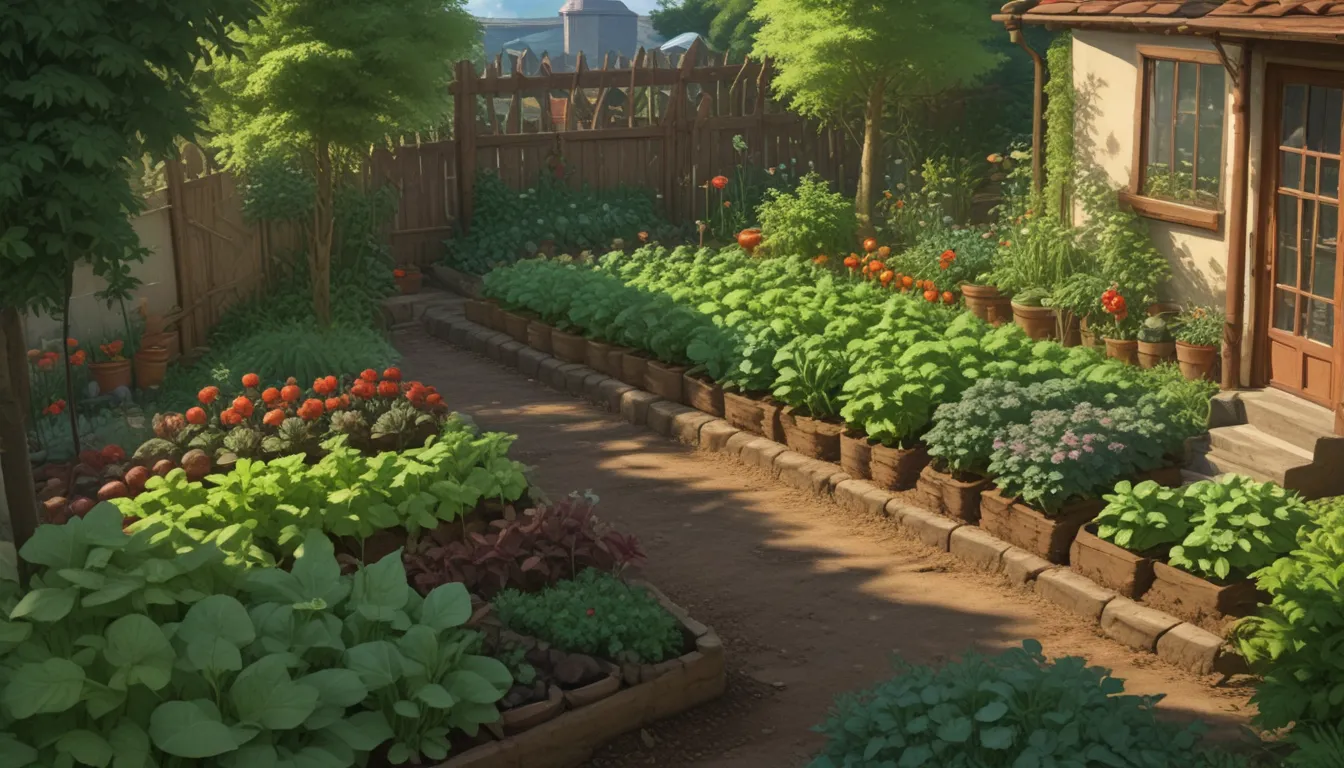Creating Your First Vegetable Garden: A Step-by-Step Guide

So, you’ve decided to take the plunge and plant a vegetable garden – congratulations! This is a fantastic decision with numerous benefits that go beyond just having fresh produce available. In this in-depth guide, we will explore various aspects of starting your vegetable garden, from selecting a suitable location to the maintenance required to ensure a successful yield. Let’s dive in and get you on your way to creating a beautiful and bountiful garden.
What You’ll Learn
- Selecting the Perfect Location
- Basic Tools for Beginners
- Soil Preparation Tips
- Choosing the Right Plants for Your Garden
- Layout Planning
- Harnessing the Power of Companion Planting
- Planting Seeds and Seedlings
- Essential Garden Maintenance
- Making the Most of Small Spaces
- Raised Bed Gardening
- Container Gardening
- Keeping a Garden Journal
- Enjoying the Fruits of Your Labor
Selecting the Perfect Location
When starting your first vegetable garden, it’s essential to begin with a manageable plot. Choosing an area that is around eight by eight feet will provide you with more than enough space to yield a decent output without overwhelming you with maintenance needs.
Look for a sunny spot that receives at least six to eight hours of sunlight daily, protected from strong winds, and close to a water source. These factors will play a crucial role in the success of your garden.
Basic Tools for Beginners
As a beginner gardener, you’ll only need a few basic tools to get started. Here are some essential items to have in your gardening arsenal:
- Round-tipped shovel
- Fork
- Steel bow rake
- Hoe or cultivator
- Hand trowel or hori hori knife
- Garden hose or watering can
Additionally, consider investing in gardening gloves, pruning shears, a garden knife, a kit bag, a wheelbarrow, and other handy tools to make your gardening experience more enjoyable.
Soil Preparation Tips
In preparation for planting, it’s crucial to properly care for your soil. Begin by marking out your garden bed, then dig and turn the soil to a depth of at least 12 inches. Remove any debris, rocks, or roots, and incorporate organic matter like compost or well-rotted manure to enrich the soil.
Level the surface and create a suitable environment for your plants to thrive. Adding edging around the perimeter can help prevent weed encroachment.
Choosing the Right Plants for Your Garden
Selecting the plants for your garden is an exciting part of the process. Research and create a list of your favorite vegetables, considering factors like yield, space requirements, and growing conditions. Refer to planting charts for your region to determine which plants are suitable for direct sowing or require seedlings.
Opt for disease-resistant varieties and diversify your selection to extend the growing season. Planning ahead with planting dates, frost dates, and agricultural zones specific to your region will help you make informed choices.
Layout Planning
Sketching out a layout for your garden will help you visualize the placement of each plant. Consider light requirements, spacing, and plant height when creating your plan. Stagger rows, incorporate raised beds or mounds, and leave ample space for pathways to facilitate maintenance.
Don’t forget to include companion plants, herbs, or flowers to enhance the overall health of your garden and attract beneficial pollinators.
Harnessing the Power of Companion Planting
Companion planting is an excellent way to promote healthy growth and natural pest control in your garden. Plants like marigolds, basil, and flowering herbs can deter pests and attract pollinators. Experiment with different combinations to see what works best for your garden.
Planting Seeds and Seedlings
When it’s time to plant your seeds or seedlings, follow the instructions on the packaging for proper depth and spacing. To minimize shock during transplanting, plant on a cloudy day or in the morning when the weather is cool.
Water gently and provide support for plants that require staking to prevent root damage. Leave space for successive sowings and ensure your garden gets the care it needs to thrive.
Essential Garden Maintenance
To ensure a successful harvest, proper maintenance is key. Keep your garden beds free of weeds, provide adequate irrigation, and fertilize your plants as needed.
Watering:
Water young seedlings gently, avoiding wetting the leaves directly. Use a soaker hose to ensure consistent moisture levels and prevent overwatering. Water in the morning to help plants absorb nutrients efficiently.
Fertilizing:
Different plants have varying fertilizer needs. For leafy greens and root vegetables, follow packet recommendations. Heavy feeders like tomatoes and brassicas may require additional nutrients like compost or manure.
Weeding:
Regular weeding is essential to prevent weed competition. Spend a few minutes each day pulling weeds by hand or using tools to keep your garden bed tidy.
Making the Most of Small Spaces
If you have limited space, consider using the French Intensive Method to maximize your yield. Double-digging and intercropping can create a favorable microclimate and improve plant health, resulting in higher crop yields.
Ensure your soil remains light and fluffy and incorporates intercropping techniques to optimize space usage.
Raised Bed Gardening
Raised beds are a fantastic way to create a permanent garden space with improved soil quality. When building a raised bed, avoid using treated lumber to prevent harmful chemicals from leaching into your soil.
Container Gardening
Containers are an excellent option for small-space gardening. Select suitable containers and varieties labeled for compact growth. Ensure proper drainage and amend your soil with organic material to provide essential nutrients.
Frequent fertilizing and watering are essential for container-grown plants, so be mindful of their needs and adjust your care routine accordingly.
Keeping a Garden Journal
Starting a garden journal can help you track your progress, plan future plantings, and document your garden’s success. Whether you’re a beginner or seasoned gardener, a garden journal can be a valuable tool for staying organized and planning ahead.
Enjoying the Fruits of Your Labor
Gardening can be a rewarding and enjoyable experience, providing fresh produce and a sense of accomplishment. Get your family involved in the process, and share the joy of gardening with your loved ones. Remember to stay on top of maintenance tasks and enjoy the process of nurturing your garden to a successful harvest.
Creating your first vegetable garden is a fulfilling journey that offers numerous benefits beyond fresh produce. By following these steps and tips, you can embark on a rewarding gardening experience and enjoy the fruits of your labor. Happy gardening!
For more gardening inspiration and practical tips, explore additional resources in our comprehensive guide:
- Practical Advice for Dealing with Common Garden Pests
- The Art of Cover Cropping: Sustainable Techniques for Healthy Soil
- A Beginner’s Guide to Understanding Garden Soil and Amendments
This revised guide offers detailed and practical advice for beginners looking to start their first vegetable garden. By following the steps outlined in this article, readers can confidently embark on a successful gardening journey and enjoy the benefits of growing their own fresh produce. Happy gardening!





